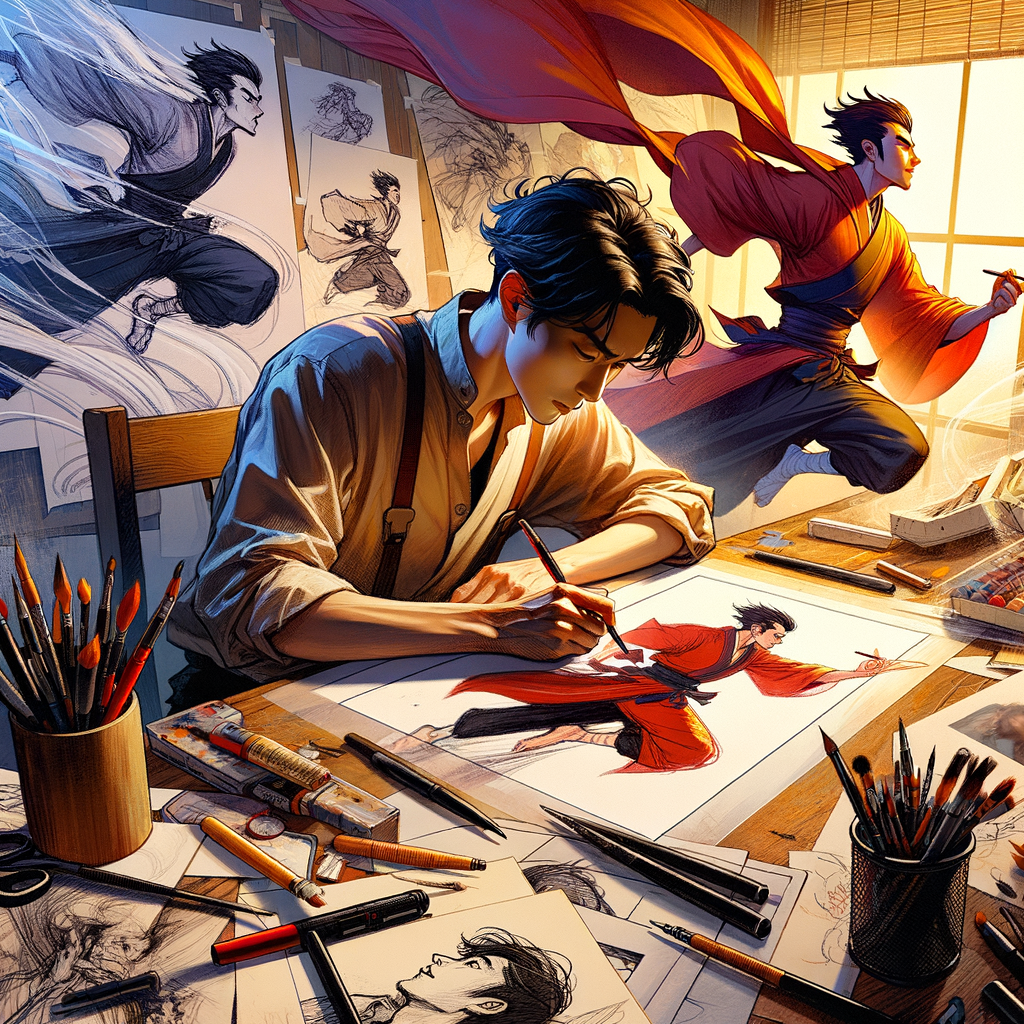
Character design is more than just creating shapes and colors; it’s about storytelling, emotion, and movement. Whether you are a beginner or a professional artist, understanding the nuances of character design can significantly enhance your artistic abilities. In this article, we will dive deep into the principles of character design, exploring how to effectively capture dynamic poses and emotions to bring your characters to life.
The process of character design begins with understanding the fundamentals. A well-designed character should not only look appealing but also convey a story. This involves a keen understanding of anatomy, posture, and the subtleties of emotion.
One of the first steps in character design is determining the character’s purpose. What role does the character play in the story? Is the character a hero, a sidekick, or perhaps an antagonist? Each of these roles has different design requirements. For instance, heroes are often designed to appear strong and brave, while antagonists may have features that evoke fear or mistrust.
Anatomy and Proportions
An essential aspect of character design is understanding human anatomy and proportions. This knowledge allows artists to create more realistic and believable characters.
- Study Anatomy: Start by studying human anatomy. Understand the muscle groups, bone structure, and how they move.
- Practice Proportions: Familiarize yourself with the typical proportions of the human body. Use reference images to practice drawing the human body in various poses.
- Sketch Often: Regular sketching will help you gain muscle memory and improve your drawing skills over time.
Capturing Movement
The next step is to learn how to capture movement in your character designs. Dynamic poses can add life to your character, making them more engaging to the viewer.
- Use Gesture Drawing: Gesture drawing is a technique that involves quickly sketching the basic forms of a character in motion. This helps artists capture the essence of movement without getting bogged down in detail.
- Study Movement: Observe people and animals in motion. Take note of how they move in different situations.
- Utilize Action Lines: Action lines are imaginary lines that show the movement of a character. Incorporating these lines can help make your poses more dynamic.
Emotional Expression
Emotion is a critical component of character design. A character’s facial expression and body language can convey a wide range of emotions, helping to tell the story visually.
- Facial Expressions: Learn the different facial expressions that correlate with emotions. Understand how various features (eyes, mouth, eyebrows) change with different feelings.
- Body Language: A character’s posture can convey their emotional state. A slouched posture may indicate sadness, while an upright posture could denote confidence.
- Practice Empathy: Empathy allows you to connect with your characters on a deeper level. Think about how you would express a particular emotion in a real-world situation.
Character Color Palette
The color palette of a character can significantly influence the audience's perception of their personality. Different colors evoke different feelings and associations.
- Warm vs. Cool Colors: Warm colors (reds, oranges, yellows) can evoke passion or aggression, while cool colors (blues, greens, purples) may suggest calmness or sadness.
- Cultural Associations: Be mindful of cultural meanings associated with different colors. Color perception can vary widely across cultures.
- Consistent Palette: Ensure that your character’s color palette is consistent throughout different poses and expressions.
Creating a Unique Style
Once you have mastered the fundamentals, you can begin developing your unique style. Style is what distinguishes one artist's work from another.
- Experimentation: Don’t be afraid to experiment with different styles and mediums. The more you explore, the more you will discover what resonates with you.
- Study Other Artists: Analyze the work of other artists. Understand what elements you admire and how you can incorporate them into your style.
- Consistency: While it is important to experiment, maintaining a level of consistency in your work will help to solidify your personal style.
Conclusion
Character design is a multifaceted discipline that requires practice and dedication. By understanding anatomy, movement, and emotional expression, you can create characters that are not only visually appealing but also resonate with viewers. As you continue to refine your skills and develop your artistic voice, remember that the most impactful characters are those that tell a story.
Now that you have the tools and knowledge to start designing compelling characters, it's time to put your skills to the test! Grab your sketchbook or tablet, and let your imagination run wild.

